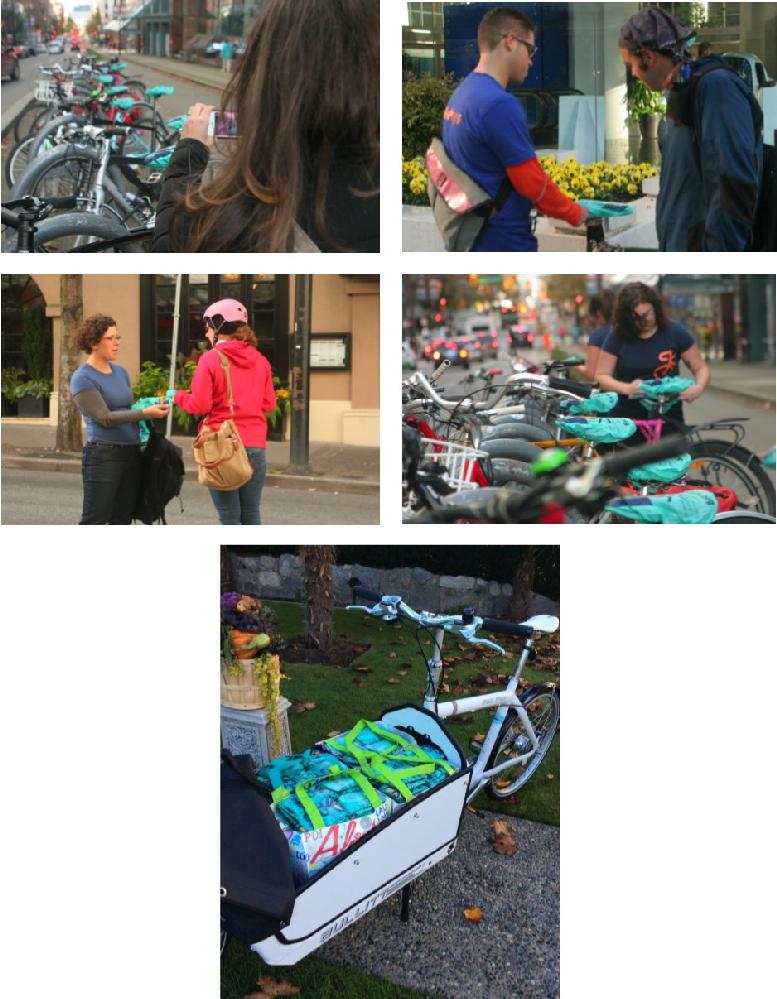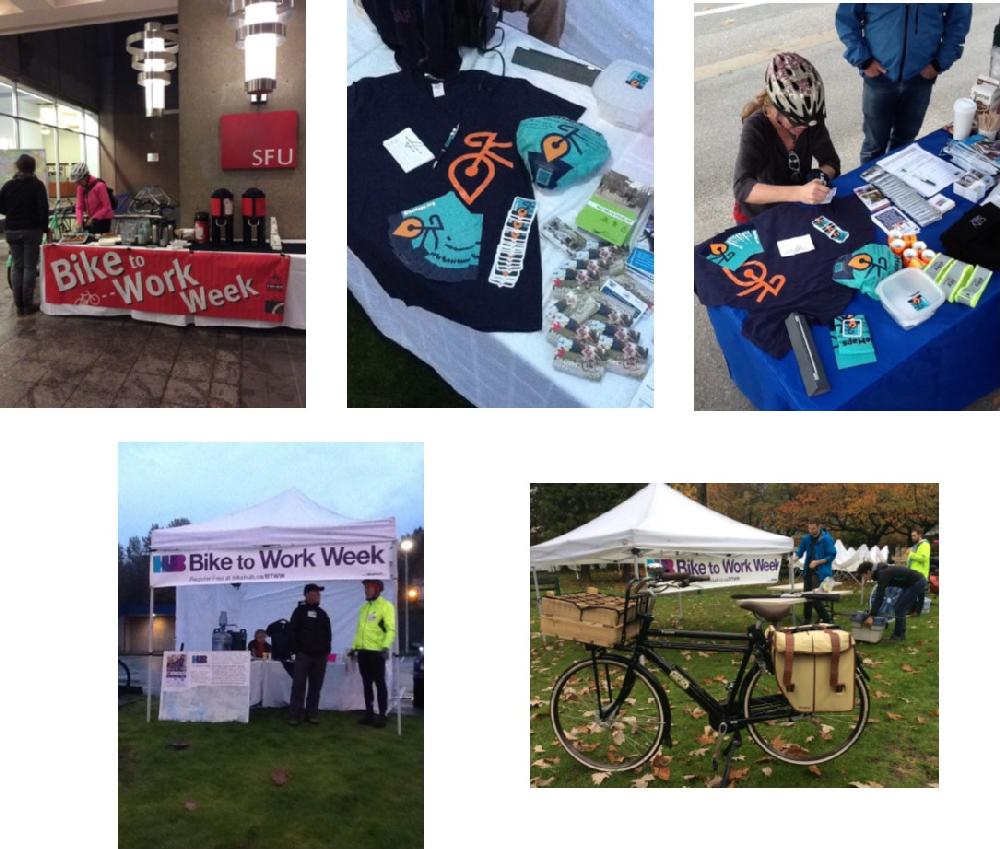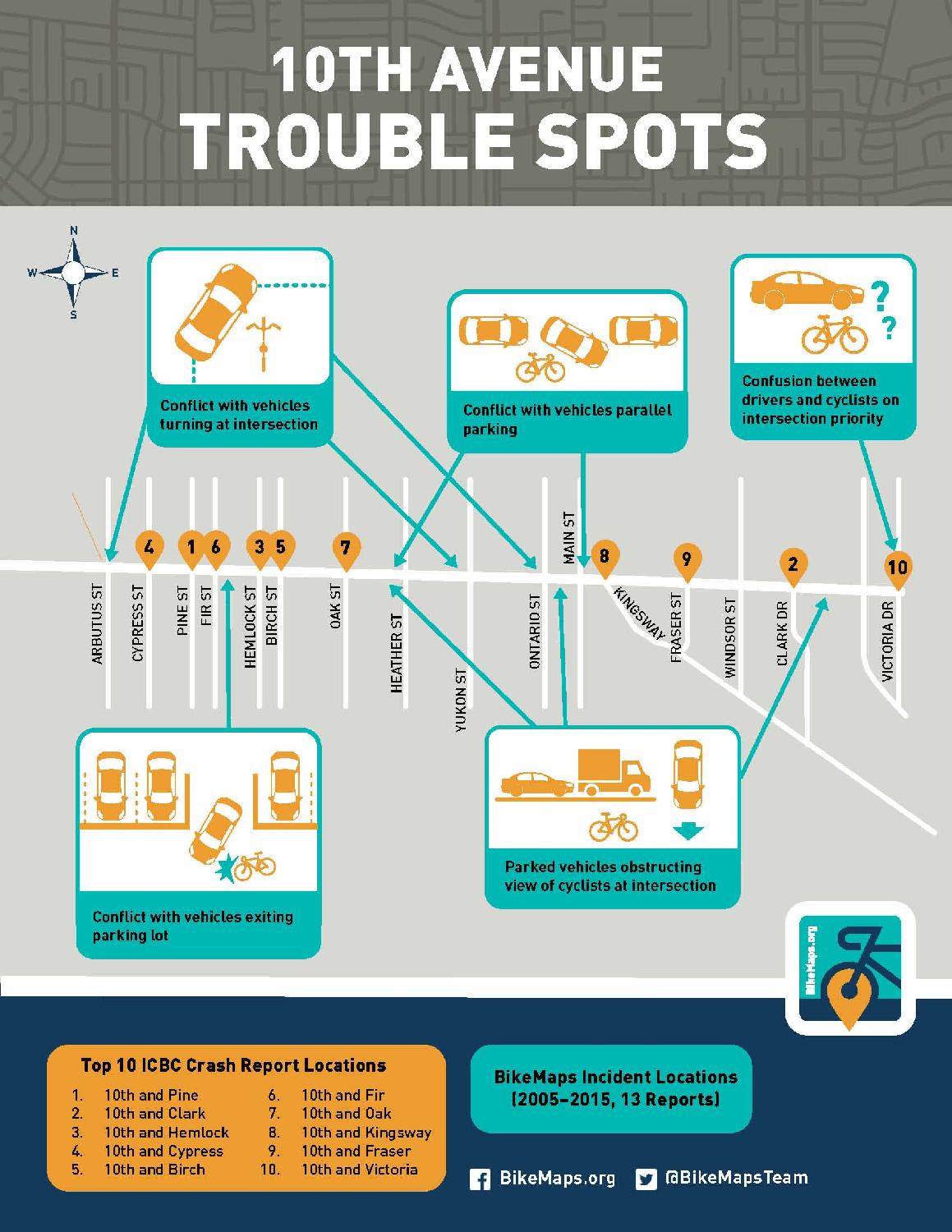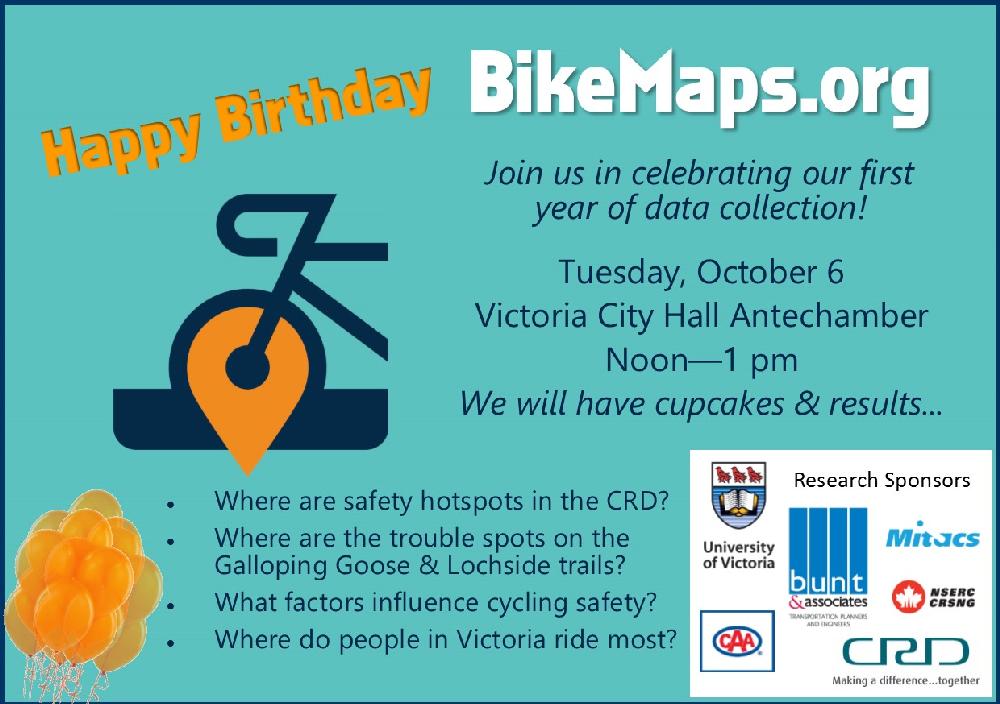This fall marked the expansion of BikeMaps.org to Metro Vancouver, a region home to almost 2.5 million people. As BikeMaps.org was relatively new to the region, our first step toward improving cycling safety was getting more cycling incidents reported on the website. To do this, we needed to raise awareness of BikeMaps amongst regional cyclists. With funding from the Bullitt Foundation, we focused on two main promotional events: a bike saddle cover drive and information tables at Bike to Work Week (BTWW) celebration stations. These events helped to increase the average daily reporting frequency by nearly 300 per cent (from 0.8 reports/day to 2.3 reports/day). As of December 2015, citizens reported over 520 cycling related incidents in Metro Vancouver, propelling us to 75% of our reporting target. The success of these initiatives helped us complete a cycling safety analysis of Vancouver’s 10th Ave. corridor. As more cyclists learn about BikeMaps.org and incident reporting continues to grow, BikeMaps.org is well positioned to make a valuable contribution to cycling safety in the region. 
On October 23, a five-person team of BikeMaps volunteers, together with a Bullitt cargo bicycle loaded with over 600 brightly coloured BikeMaps.org saddle covers, travelled a 5.7 km route in Downtown Vancouver outfitting the saddles of parked bicycles with covers. Cyclists were encouraged to take a photo of their new saddle cover and uploaded the photo to Instagram for a chance to win a prize.

The MetroVan BikeMaps team attended 10 Bike to Work Week (BTWW) celebration stations during the week of October 26-30, 2015. Stations were scheduled in the morning (07-09:00) and afternoon (16-18:00) peak periods in municipalities across the region. To encourage cyclists to visit our table, we included a prize draw for BikeMaps.org T-Shirts (daily), and one 100$ gift card. We engaged directly with 250-300 individuals over the course of BTWW, which enabled us to introduce BikeMaps.org, answer questions, and give demonstrations on how to report incidents.





